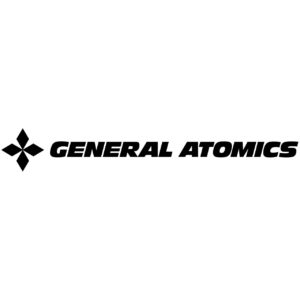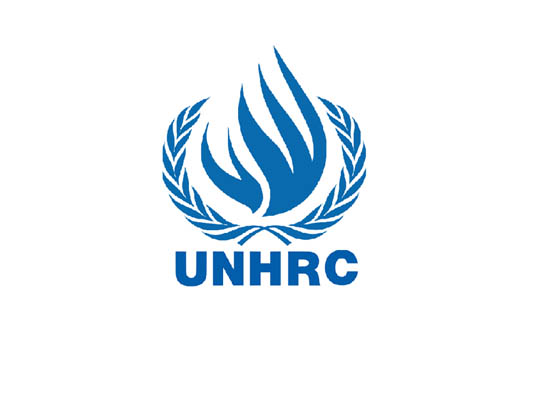Sometimes commercial nuclear fusion seems like the end of the rainbow. It was always “forty years” away no matter how much time passed. Today at least six companies in the U.S. alone are working on practical nuclear fusions systems and some say they are only ten years away from commercial reactors.
One of the most popular approaches for nuclear fusion is to compress and heat a plasma to the point where the atoms fuse and release energy. This approach is very challenging and there are a lot of variables that have to be manipulated to keep the plasma safely confined. If the plasma escapes the control of the magnetic confinement, it can quench the fusion reaction and even damage the containment vessel if it is not brought back under control quickly.
Heat from escaping plasma can melt the walls of the containment vessel, large erratic electrical currents can result in physical forces that can cause damage, and runaway high energy electron beams can cause serious localized damage. One way to prevent such damage is to inject material into the plasma that causes the plasma energy to uniformly radiate away. The problem with this approach is that it is difficult to get the injected material to the center of the plasma before some disruption occurs. If the researchers can get the injected materials into the center of the plasma, then the plasma can be cooled and disruptions can be stopped.
The DIII-D National Fusion Facility (DNFF) is part of a national effort to generate magnetically confined nuclear fusion. The facility is located in San Diego and is operated by General Atomics for the U.S. Department of Energy. The DIII-D is a research tokamak that has been operated at the facility since the late 1980s.
Researchers at the DNFF have just demonstrated a new technique to cool magnetically confined plasma before disruptions occur. The first step is the creation of a pellet of boron powder enclosed in a thin diamond shell. Then the pellet is sent into the center of the confined plasma at a speed of four hundred and fifty miles per hour. This gets the pellet deep into the plasma where the diamond shell disintegrates and releases the boron dust where it will have the maximum desired effect.
This new technique could have a profound effect on regulating confined plasmas for the generation of nuclear fusion. It can potentially solve three major problems with confined plasmas. First, it efficiently, quickly and safely radiates away excess heat in the plasma. Second, it reduces the forces exerted by the plasma on the physical containment vessel. And, third, it prevents the formation of energetic electron beams.
Richard Buttery is the Science Director for the DNFF. He said, “Shell pellets offer the potential of dealing with all three facets of the challenge, eliminating risk of device harm.” So far, the technique has only been demonstrated on a small research tokamak. In the future, the team will work on improving the design of the diamond shell that carries the boron dust so that it can be used to cool reactor-class plasmas in bigger tokamaks.
Blog
-

Nuclear Fusion 55 – DIII-D National Fusion Facility Develops New Technique o Cool Magnetically Confined Plasma
-
Nuclear News Roundup Feb 26, 2019
CEF concerned that Ohio’s political leaders want tax payers to finance nuclear plants. Vindy.com
Wind & Solar In China Generating 2× Nuclear Today, Will Be 4× By 2030 cleantechnica.com
A giant offshore wind project has reignited debate over whether the intermittent renewable energy technology could one day replace nuclear power. Greentechmedia.com
-

Geiger Readings for Feb 26, 2019
Ambient office = 62 nanosieverts per hour
Ambient outside = 84 nanosieverts per hour
Soil exposed to rain water = 87 nanosieverts per hour
Avocado from Central Market = 71 nanosieverts per hour
Tap water = 121 nanosieverts per hour
Filter water = 116 nanosieverts per hour
-

Radioacrtive Waste 383 – U.N. Report Charges That Israel Is Burying Radioactive Waste In The Golan Heights
The United Nations has charged that Israel has been burying radioactive nuclear waste in the occupied Golan Heights. Antonio Guterres is the U.N. Secretary General. He recently submitted a report for the U.N. Human Rights Council’s Fortieth Session which will begin in Geneva next week. He said in the report, “The Syrian Arab Republic noted that Israel continued to bury nuclear waste with radioactive content in 20 different areas populated by Syrian citizens of the occupied Syrian Golan, particularly in the vicinity of Al-Sheikh Mountain [Mt.Hermon]. The practice has put the lives and health of Syrians in the occupied Syrian Golan in jeopardy and constituted a serious violation of the Fourth Geneva Convention.” Syrian has been claiming for the last decade that Israel has been burying waste in the Heights.
Emmanuel Nahshon is a spokesman for the Israeli Foreign Ministry. He said that the charge from Syria was “utter nonsense.” He added that the claim was “another false report from the UNHRC which specializes in attacking Israel” and that many of its member states “are bloody dictatorships hiding behind attacks against Israel in order not to allow scrutiny of their own human rights records.”
The Heights were captured from Syria in the 1967 Six Day War between Israel and Arab nations. Israel formally annexed the Heights in 1981. The international community of nations has refused to recognize Israel’s right to the Heights. The U.N. has regularly demanded that Israel return the Heights to Syria.
The new U.N report also says that Israel is “providing logistical support to terrorist groups,” operating in the Heights such as the Nusrah Front. It charges that Israel is supplying “those groups with weapons, ammunition, money and medical care to frighten the local population and to maintain a no-go zone along the ceasefire lines.” Israel says that such claims are not true.
The report claims that “the decision of Israel to impose its laws, jurisdiction and administration on the occupied Syrian Golan was null and void and without international legal effect” and “demanded that Israel rescind forthwith its decision.”
The office of the U.N. Secretary General says that it wrote the report at the request of the UNHRC and that it had only used information supplied by members of the U.N. There was no attempt to independently verify the contents of the report.
The U.N. report on the Heights will be debated as Agenda Item 7 at the annual UNHRC conference in the middle of March along with six other topics. Agenda Item 7 mandates that that the UNHRC must debate alleged Israeli human rights violation at every UNHRC session. Any charges of human rights violations made against any other country are debated under Agenda Item 4.
As usual, the UNHRC will hear more reports against actions taken by the Israeli government than any other country at the annual conference. The UNHRC also said that at this session, it will publish a controversial database of companies that are doing business with companies in areas of Israel that are beyond the pre-1967 borders. Israel has prevented the publication of this database before. -

Geiger Readings for Feb 25, 2019
Ambient office = 58 nanosieverts per hour
Ambient outside = 83 nanosieverts per hour
Soil exposed to rain water = 85 nanosieverts per hour
Carrot from Central Market = 111 nanosieverts per hour
Tap water = 130 nanosieverts per hour
Filter water = 122 nanosieverts per hour
-
Nuclear News Roundup Feb 24, 2019
CEF concerned that Ohio’s political leaders want tax payers to finance nuclear plants. Vindy.com
Wind & Solar In China Generating 2× Nuclear Today, Will Be 4× By 2030 cleantechnica.com
A giant offshore wind project has reignited debate over whether the intermittent renewable energy technology could one day replace nuclear power. Greentechmedia.com
-

Geiger Readings for Feb 24, 2019
Ambient office = 82 nanosieverts per hour
Ambient outside = 79 nanosieverts per hour
Soil exposed to rain water = 79 nanosieverts per hour
Beefsteak tomato from Central Market = 99 nanosieverts per hour
Tap water = 115 nanosieverts per hour
Filter water = 108 nanosieverts per hour
-

Geiger Readings for Feb 23, 2019
Ambient office = 158 nanosieverts per hour
Ambient outside = 101 nanosieverts per hour
Soil exposed to rain water = 99 nanosieverts per hour
Broccoli tomato from Central Market = 89 nanosieverts per hour
Tap water = 100 nanosieverts per hour
Filter water = 95 nanosieverts per hour
Dover sole – Caught in USA = 119 nanosieverts per hour
